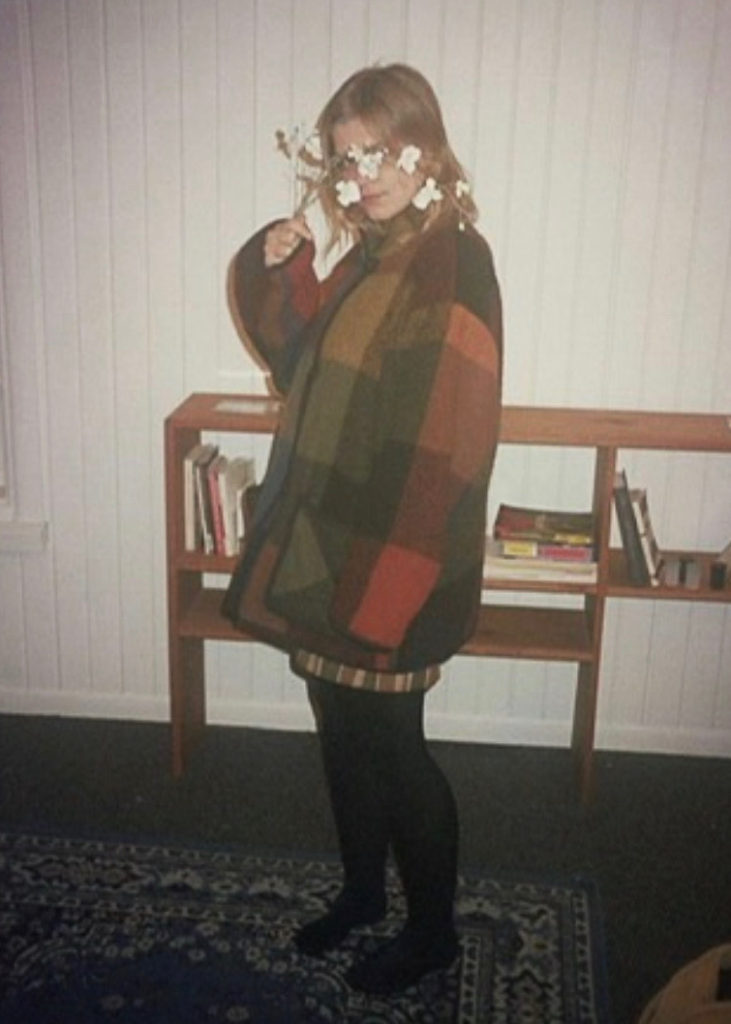When Eamon Kuo said she could give me three fun facts about herself, I thought, “Okay, sure. Some boilerplate stuff. Favorite D-Hall food. Disneyland memories. Filler.” Reporters love this stuff, however boring it might seem.
In hindsight, I really should have known better: the last 50 minutes of our conversation had been full of poignant digressions: twists and turns that contoured Kuo’s sheer individualism, and the little idiosyncrasies that make her fascinating.
“I was almost struck by lightning,” she began, “a block in a half in that direction. I’m pointing. A storm started up really suddenly. [The lightning] was like ten feet behind me. I think I must have jumped like twenty feet in the air.”
The first fun fact was compelling enough. Then they got more remarkable.
“I have synesthesia,” Eamon continued. “Associative synesthesia. It’s not as interesting or annoying as perceptual synesthesia,” she said. “Numbers have a mental color association, but I can’t actually see the color unless I just think of that color. … But anyone can do that!” she said. “That’s just thinking about colors.”
“I grew up in Lorena Hickok’s house,” Eamon said. “She was Eleanor Roosevelt’s former lover.” I began to grin, incredulous. “I’m in the house where –” now she was beginning to stifle a laugh. “No, I’m specifically in the bedroom where, based on my understanding of the house’s previous renovations, I do believe that this would be location in which, you know – things happened.”
It would be inaccurate to say that Eamon had only three fun facts to offer. She lives a life brimming with potential. She’s preoccupied with the spaces and structures we live in and how they mediate our lives.
Her independent major, organizational theory, studies the structure and composition of organizations – how they work, why they work and how they might be made better. The major draws from disciplines like sociology, political science and psychology. Her undergraduate thesis is on students, faculty and emotional labor in office hours.
Eamon will continue in academia after distance learning at Grinnell College concludes this semester. “I made an interesting decision, you might say, in applying to one [PhD] program,” she said. She found a perfect match at Northwestern University, and decided to focus all of her energy on applying to the school to maximize her chances, intending to reapply to the program and other schools if the plan didn’t work out.
As you may have guessed by this point in the article – Eamon was accepted.
On March 10, the College announced that it would transition to distance learning as a result of COVID-19, and that everyone would be required to leave campus as soon as possible.
“Um, honestly, I read the email, and then I closed it, and then I had a really productive two hours of working. I was trying to avoid thinking about the email,” Kuo said. “And then I had a meeting, and I tried to do the meeting and that just didn’t work.”
“It was a shock. It was upsetting. It was disappointing.” Donning her organizational theory cap, Kuo added, “but I’m also glad that Grinnell was able to make the choice. Grinnell is the kind of place that is committed to making tough choices like this – paying attention and not following the path of least resistance. There are hiccups. It’s messy. It’s not the same. But I think people are really … performing beyond reasonable expectations in terms of just pulling together and supporting one another. I’m not sure how many other schools could say that.”
What will Eamon miss most about Grinnell? First answer: the people. “It’s the people, right? Of course.” The second: springtime. “I feel a little bit envious that … future classes are going to get four springs in Grinnell because of how gorgeous it is,” Kuo said.
Eamon also misses “walking between places” at Grinnell. “You know, just that walk between Noyce and the Forum – that little space, where it’s all covered in trees? Walking up to Burling. All those places which have so many flowers in the spring. [Spaces] which in the winter become these deeply beautiful, very intimate spaces … when they’re all covered in snow.”
“I won’t miss the six months of grey,” she clarified.
Eamon finds traces of Grinnell everywhere, thanks in no small part to where she grew up: Urbana, Illinois, home of the University of Illinois at Urbana-Champaign. “I live in, you know, the sort of ‘Professor-Ville’ area of town where a lot of university families live,” she said. Her mother is a researcher in environmental psychology, conducting research on how green space affects human well-being.
“There’s actually been quite a large number of Grinnellians who come from Urbana, Illinois. I think I’m the eighth from the street I grew up on, which is insane,” Kuo continued. “And I know I bumped into somebody the other day, and they saw the Grinnell sticker on my car and said their kid was going to Grinnell, so that’s another one.”
I told Eamon that I, another Grinnellian, had been born in Urbana. “Pretty uncanny,” she said.
At the close of our interview – a conversational lull, the kind that reminds you of distance and space and somehow, closeness – I didn’t know what to say. Eamon just sighed. “I’m just sitting on my bed looking out the windows here,” she said. “It’s just a gorgeous day. A Grinnell kind of day, it looks like. No clouds in the sky. Bright blue sky.”




































































